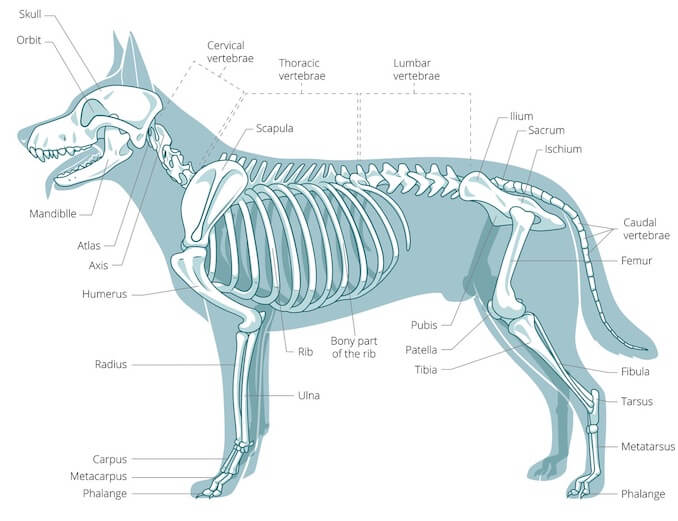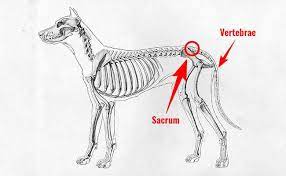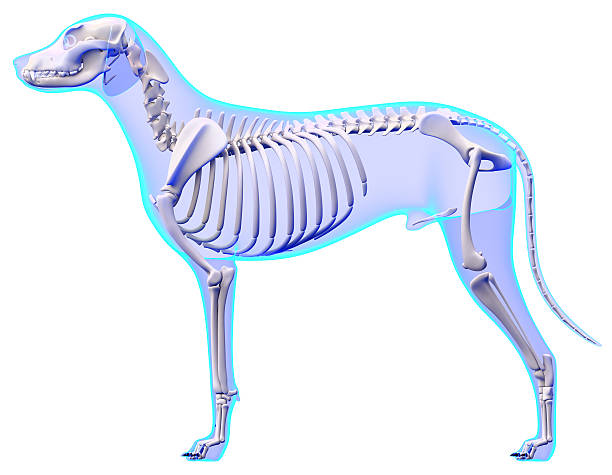As dog owners, we are not alien to the happiness we get when our babies wag their tails in all excited and giddy moods. The tails are said to have minds of their own. They often display the emotions of the canines. Lovely as they might seem, this active nature makes them prone to severe injuries, which even go unnoticed. As per research, the breed of dog serves as one of the major reasons for dog tail injuries.

In this article, we have brought to you some of the common dog tail injuries that you must be aware of.
Dog Tail Anatomy
The tail of our canines forms a part of their spinal column and consists of several vertebral segments that decrease in size as we move from the base of the tail toward the tip. These vertebral segments are surrounded by muscles that aid in moving or wagging the tail. There are multiple nerves along the length too, to offer sensation.
Between each vertebral bone, they have inter-vertebral discs that act as cushioning. These prevent bones from rubbing against each other during the tail movement, thus reducing vulnerability to internal injuries. An injury to any part of the tail- outer or inner might be really painful for your bubs, and should not be ignored.
Warning Indicators of Possible Dog Tail Injuries
Some of the common tell-tale signs of dog tail injuries include:
- Partial or complete inability to move the tail
- Holding their tails low or in an abnormal position for a continuous duration
- Changes in how they walk
- Changed pattern of their tail wags
- Loss of hair on the tail or near the base
- Constant licking or biting tail
- Limp tail
- Being overly protective of their tails
- Change in their potty habits
- Showing signs of pain. For instance, whimpering, whining, or other such vocal indications.
Prominent Dog Tail Injuries
There are several types of dog tail injuries. We must figure out what the exact location of the wound is. Next, we have to check the type of the wound and decide on a treatment plan, if needed.
Now let’s delve into some of the common tail injuries our dogs might suffer from.
Happy Tail
Unlike what the name portrays, this isn’t a good situation. Occurring mostly in dogs with longer tails, these injuries are painful and have the potential of culminating into chronic wounds. They occur when your dog repeatedly hits its tail against something firm like walls, tables, chairs, etc.
Use Super Clot Gel for Dog to stop bleeding due to minor injuries and relieve pain.
Swimmer’s Tail
Swimmer’s tail, often referred to as limp tail, or limber tail, is showcased by complete drooping of the tail or by drooping of the tip of the tail. The condition is commonly witnessed in working dogs due to overuse of the tail during tail muscle training, wagging, or prolonged time in a small cage/crate.
Growths, Masses, and Swelling on the Tail
Depending on the base cause, the masses and growths on your pet’s tails may vary in size and structure, and at times might be filled with fluid. Whiles some of them are painful, others aren’t.
- Cysts are soft, benign masses that move under the skin when you push on them. Mostly, these aren’t painful, unless they are infected or inflamed.
- Trauma is slight swelling on the tail if your dog hits it against something hard.
- Abscesses are fluid-filled infectious pockets on your dog’s tail.
Abrasions
Abrasions are wounds that eventually cause reddened skin, hair loss, and occasional scabbing and mild bleeding. When dogs suffer from trauma or constantly rub their tail against some rough surface, it might result in abrasions. If kept untreated, these might bleed, get further swollen, or leak fluid.
End Note
While these are some of the most common dog tail injuries, it’s not limited to just these. Additionally, your dog might also suffer from lacerations, de-gloving, tail fractures, or injuries due to pulling (avulsion). It is best to consult a veterinarian who would assist you in coming up with an appropriate approach to deal with canine tail injuries.




